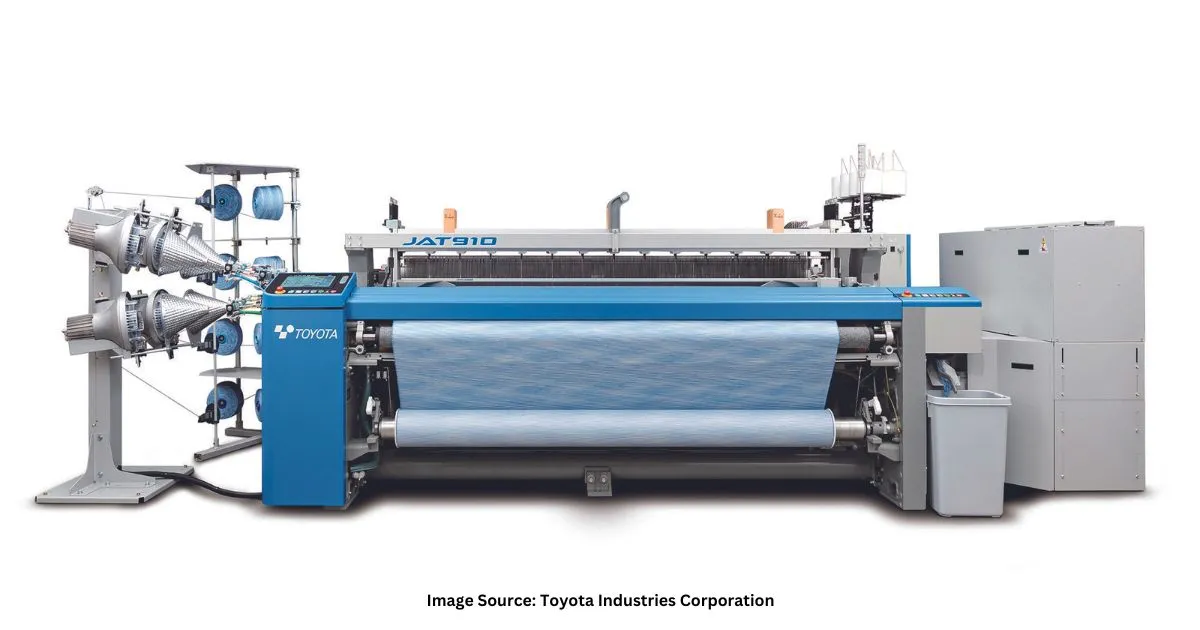Best Take Care Tips For Your Air Jet Loom Shed
In this blog, we learn about the best take-care tips for your Air Jet Loom Shed, A loom is a device used
to weave cloth and tapestry. It is the contact point of all the processes involved in fabric formation,
including ginning, opening, carding, spinning, winding, warping, sizing, and beaming. The primary
purpose of any loom is to hold the warp threads under tension to facilitate the interweaving of the weft
threads. Weaving is the process of interlacing two sets of yarns, the warp, and the weft, perpendicular
to each other to create fabric. There are several types of looms with different features, but at their
essence, all of them perform this fundamental task.
The Air Jet Loom is a type of shuttleless loom that uses air jets to propel the weft yarn through
the warp shed. It is capable of weaving plaids, as well as dobby and jacquard fabrics, and can produce
standard household and apparel fabrics, as well as industrial products such as printed circuit board
cloths. The type of fabric that can be woven on an air jet loom depends on the specifications of the
machine and the type of yarn being used.
Air Jet Loom Market
In the international market, the air jet loom market size was valued at USD 965.2 million in 2022 and is
expected to reach USD 1369.2 million by 2028, exhibiting a CAGR of 6.0%
In the Indian market, air jet looms are used in the textile industry, especially in Madhya Pradesh and
Maharashtra.
The city of Icchalkaranji, Maharashtra is a hub for air-jet looms in India. The textile industry
in Ichalkaranji has a significant presence of air jet loom sheds, and many textile mills in the area use
air jet looms for weaving. Till 2020, Maharashtra had the most numbers of active air jet looms in the
country. About 2.9 Lakhs units, which is about six times more than the closest next of Madhya Pradesh at
around 50000 units followed by Gujarat with approx 30000 units.
Tips To take Care Of Air Jet Loom Shed
These tips will help you take care of your air jet loom, whether you're performing routine
maintenance or starting it up after a long time.
Airline
- Disconnect air pipe connections from the machine.
- Begin by draining all compressed air from open lines until all water/moisture or any foreign
particles are completely removed before proceeding with the machine checkup.
- Carefully inspect the main rubber pipe for any signs of punctures or hardening. Keep spare air pipes
and jubilee clamps ready in case replacement is needed.
- Check all air valves and air pipes, and manually test them for any defects. Replace any components
that show signs of malfunction.
- Thoroughly clean the air filter, removing all dirt and water droplets.
- Perform a comprehensive machine cleaning using compressed air to ensure optimal functionality.
Clean the machine thoroughly with compressed air.
Shedding
- Remove all oil from the Cam Box or Dobby, filter it, and add more oil if necessary.
- Clean the oil filter.
- Grease the entire system, making sure to remove all old grease.
- Clean and oil the side supports of the frames, but do not add too much oil.
- Release the warp tension on the beam and reset the zero position.
- Manually check all Leno devices and adjust their tensions and timings.
- Follow the manufacturer's instructions to restart the machine.
Picking
- Inspect all nozzles and pipes, and calibrate all valves.
- Inspect all connections of the filling detectors, etc.
Beat up
- Clean the oil filter and check the oil level. If the level is low, top it up.
- Clean all old grease from the points with a cloth. Then, re-grease all points.
- In the case of centralized or piped greasing points, first remove all old grease. In most cases, the
grease dries up and can puncture the pipes when re-greasing. So, be careful.
Electrical
- Clean the panels thoroughly with air and a blower.
- Use a hot air blower to remove moisture from the panels.
- Inspect all power and control cables manually for any damage.
- Check all tube lights and their connections manually, as they are the most likely points for fire.
- Inspect all taped joints and re-tape them to prevent any sparks.
- Check the main power supply voltage and earthing.
- After starting the machines, take the main load in all phases on the individual loom.
General
- After checking all the points, start the looms one by one. Start the next loom at least 15 minutes
before the previous loom so that you can take care of any accidents.
- If you are resuming weaving after a prolonged period of inactivity, do not change any loom settings.
It is common for the warp sheet to experience tension. However, things will gradually return to
normal after a few meters of production.
- Start the looms at least one hour after the H plant is up and running and the department is in a
conditioned environment. This one-hour grace period will help the warp sheet to regain its weaving
strength and it will clean the dust and dirt in the environment.
- Most importantly, after running the department for 24 hours, clean the main airline by opening all
vent valves and removing all moisture and rust particles that have settled in the line. Also, clean
all the filters in the line and on all the looms individually.
- Refer to the manufacturer's instructions for safe start-up.
PS: We do not claim ownership of any of the images used. All credit is given to the owners.

